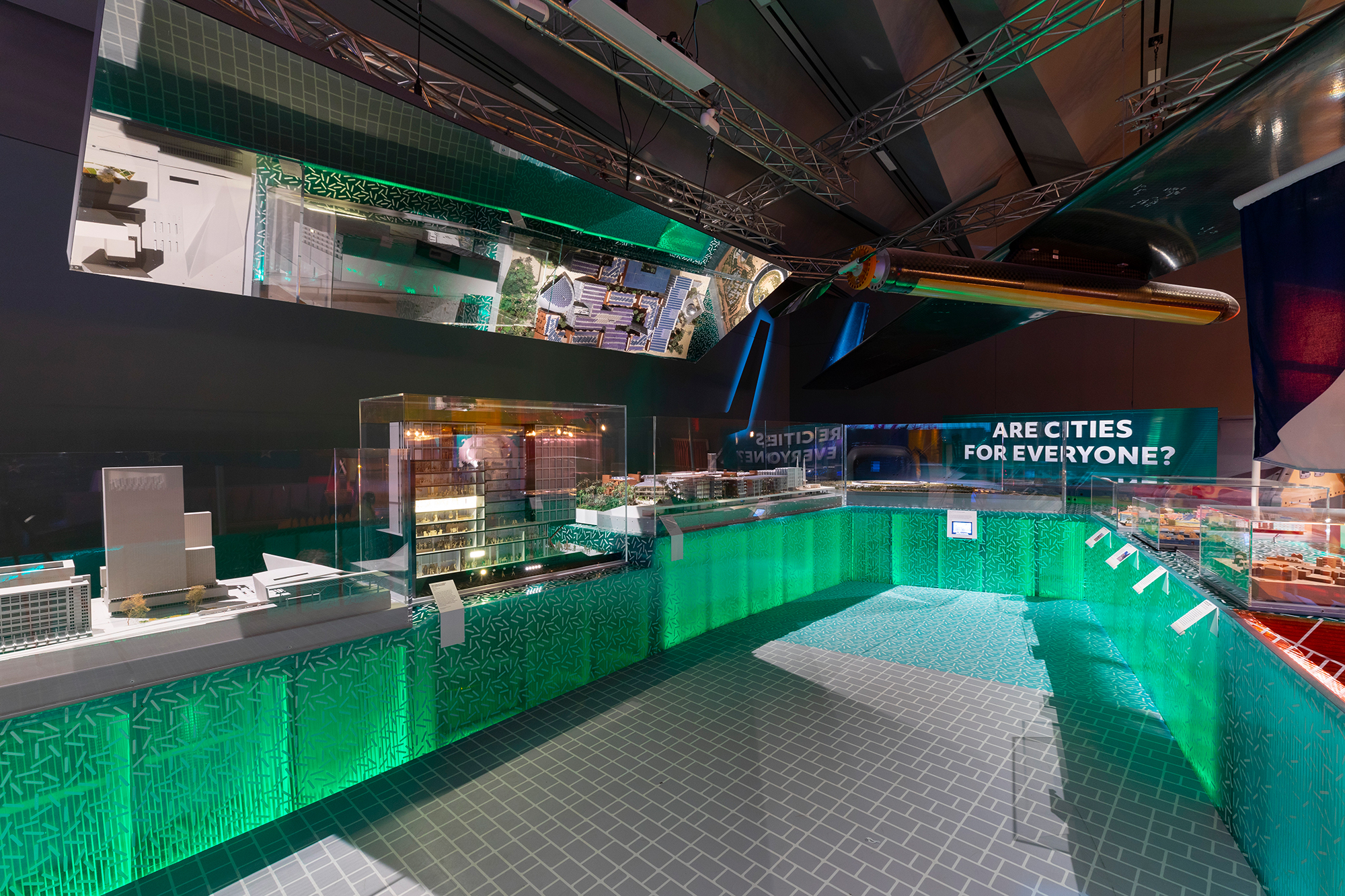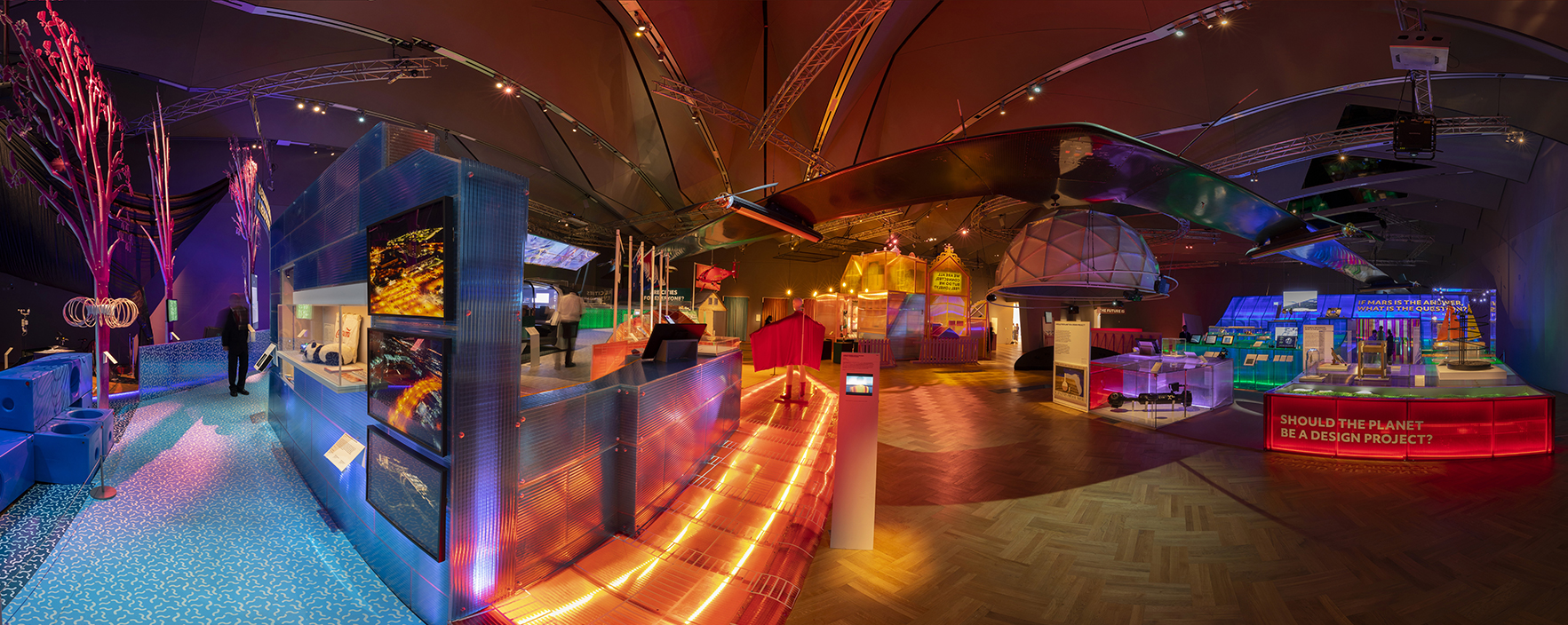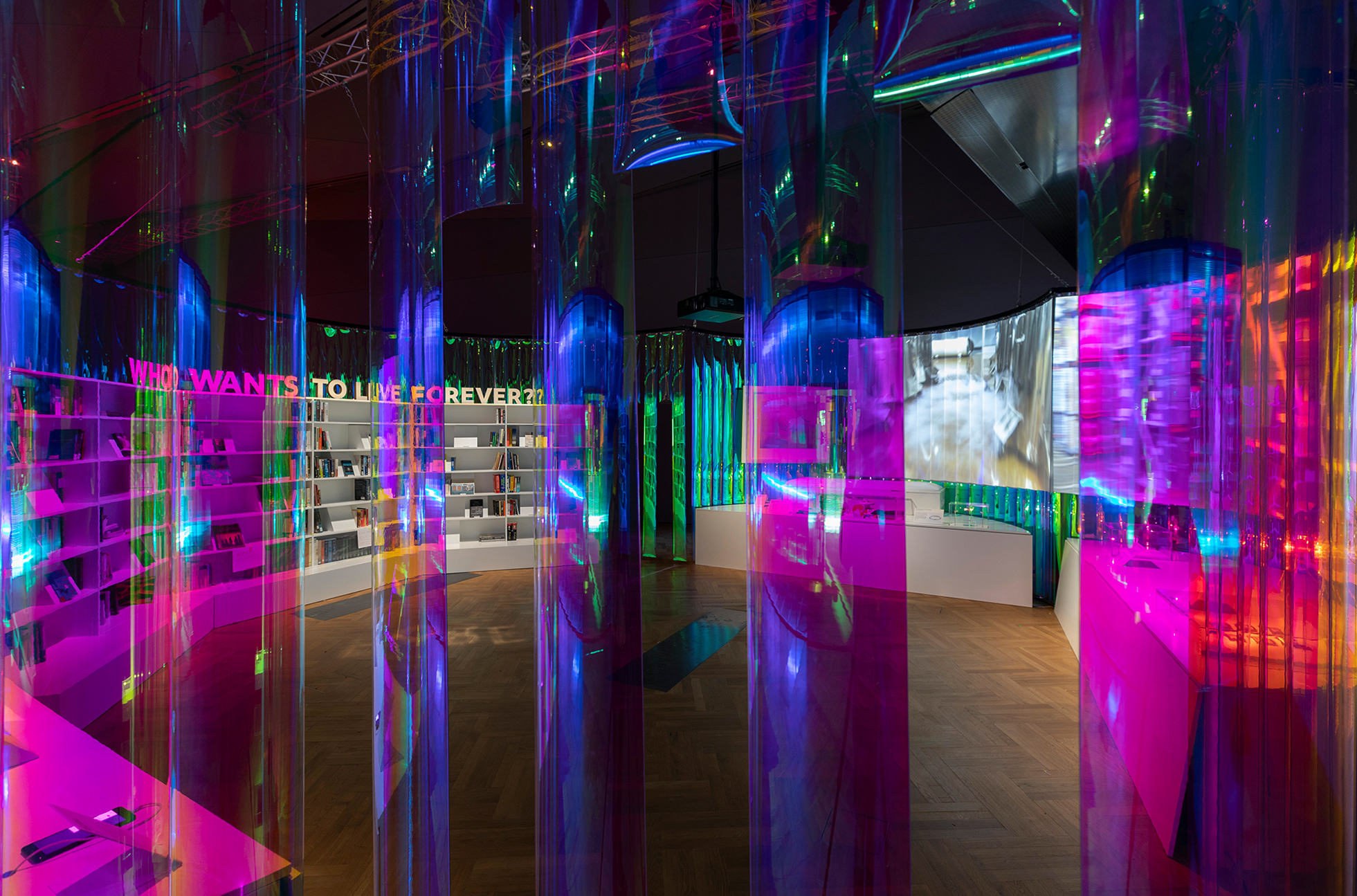The Future Starts Here
VICTORIA AND ALBERT MUSEUM, LONDONI worked on the curatorial team of The Future Starts Here, an exhibition about the future of design and technology that brings together over 100 objects shaping the world of tomorrow. This exhibition was held from 12 May to 4 November 2018.
As part of the programming for this exhibition, we organised a conference called A Toolkit for the Future, as well as a futures-focused Friday Late.




The following statement encapsulates some of my thinking around this exhibition, which I presented as part of the opening remarks for our conference, A Toolkit for the Future:
In the course of putting together the exhibition (and indeed events like this conference), we’ve asked ourselves many questions, including: where are these futures being made, and who gets to make them? Our best technological developments have traditionally been recognised as emerging from industrialised contexts, with Silicon Valley (in the US) being one of the most famous examples. Today, however, these dominant centres are now being challenged by the ever-increasing influences of the ‘peripheral’, from Penang in Malaysia, with its growing number of start-ups, to Nairobi in Kenya, which hosts numerous innovation spaces, incubation centres, accelerators, and maker labs. Most recently, the maker culture in Shenzhen, China, facilitated by an open-source-like model, as well as access to low cost resources, has captured the attention of many, and will be a case that will be discussed later today.
The de-centralisation of where our designs and technologies are being produced sits alongside another urgent conversation: who gets to make these technologies. The lack of diversity in the US tech industry - in so-called ‘tech giants’ like Facebook and Apple, which currently have a large stake in probable futures - is an issue that has already been widely reported.
In the course of putting together the exhibition (and indeed events like this conference), we’ve asked ourselves many questions, including: where are these futures being made, and who gets to make them? Our best technological developments have traditionally been recognised as emerging from industrialised contexts, with Silicon Valley (in the US) being one of the most famous examples. Today, however, these dominant centres are now being challenged by the ever-increasing influences of the ‘peripheral’, from Penang in Malaysia, with its growing number of start-ups, to Nairobi in Kenya, which hosts numerous innovation spaces, incubation centres, accelerators, and maker labs. Most recently, the maker culture in Shenzhen, China, facilitated by an open-source-like model, as well as access to low cost resources, has captured the attention of many, and will be a case that will be discussed later today.
The de-centralisation of where our designs and technologies are being produced sits alongside another urgent conversation: who gets to make these technologies. The lack of diversity in the US tech industry - in so-called ‘tech giants’ like Facebook and Apple, which currently have a large stake in probable futures - is an issue that has already been widely reported.
To offer some statistics, Apple’s diversity report from November 2017 found that the company’s overall workforce is around 54% white, 21% Asian, 9% black, 13% hispanic, and 3% two or more races. Women make up 23% of workers in tech roles, and 32% of employees overall. Similar trends have been noted for other companies, too.
This lack of representation has real consequences for the kinds of technologies - and the kinds of futures - we create. On the one hand, failing to consider diverse viewpoints when designing and realising systems results in products that are unable to function appropriately for particular groups - think of image recognition systems that are unable to recognise darker skin tones, or being made to choose the ‘neutral’ option when declaring your gender on website sign-up pages when you neither identify as a man nor a woman. But this also means that these groups are left out of the conversation entirely. How can we then address the inherent biases embedded within our current systems? In what ways can we cut across different scales - of disciplines, cultures, geographies - and include underrepresented groups, not just based on race or gender, but LGBTQ people or those who might be physically disabled for instance, to generate different reference points and other ways of collaborating; ultimately, to imagine and realise more inclusive future possibilities?
This lack of representation has real consequences for the kinds of technologies - and the kinds of futures - we create. On the one hand, failing to consider diverse viewpoints when designing and realising systems results in products that are unable to function appropriately for particular groups - think of image recognition systems that are unable to recognise darker skin tones, or being made to choose the ‘neutral’ option when declaring your gender on website sign-up pages when you neither identify as a man nor a woman. But this also means that these groups are left out of the conversation entirely. How can we then address the inherent biases embedded within our current systems? In what ways can we cut across different scales - of disciplines, cultures, geographies - and include underrepresented groups, not just based on race or gender, but LGBTQ people or those who might be physically disabled for instance, to generate different reference points and other ways of collaborating; ultimately, to imagine and realise more inclusive future possibilities?
